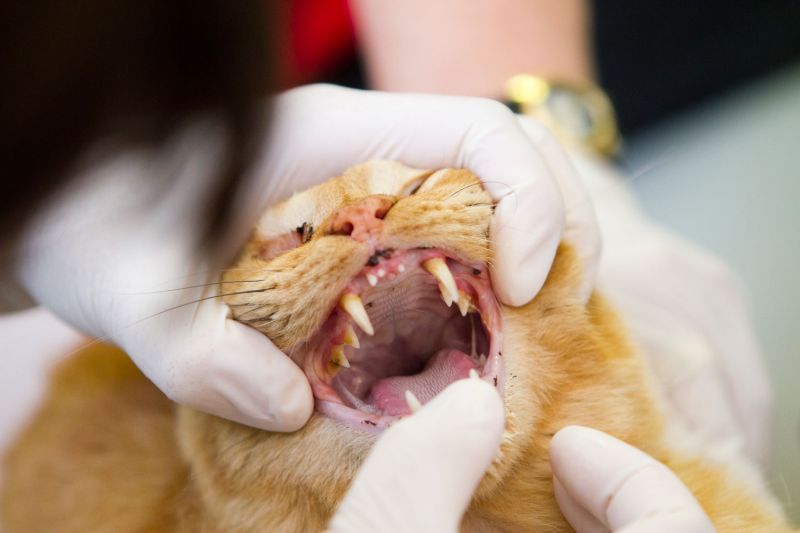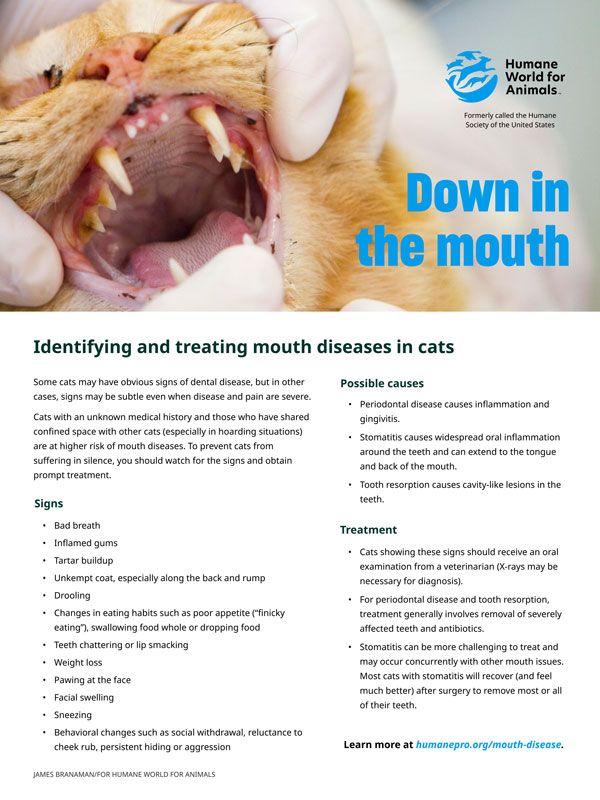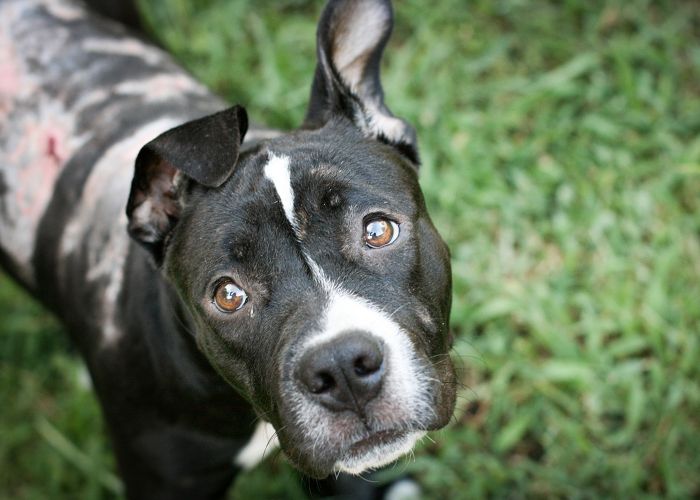Fact sheet: Down in the mouth
Identifying and treating mouth diseases in cats

Some cats may have obvious signs of disease, but in other cases, signs may be subtle even when disease and pain are severe.
Cats with an unknown medical history and those who have shared confined space with other cats (especially in hoarding situations) are at higher risk of mouth diseases. To prevent cats from suffering in silence, you should watch for the signs and obtain prompt treatment.
Signs
- Bad breath
- Inflamed gums
- Tartar buildup
- Unkempt coat, especially along the back and rump
- Drooling
- Changes in eating habits such as poor appetite (“finicky eating”), swallowing food whole or dropping food
- Teeth chattering or lip smacking
- Weight loss
- Pawing at the face
- Facial swelling
- Sneezing
- Behavioral changes such as social withdrawal, reluctance to cheek rub, persistent hiding or aggression
Possible causes
- Periodontal disease causes inflammation and gingivitis.
- Stomatitis causes widespread oral inflammation around the teeth and can extend to the tongue and back of the mouth.
- Tooth resorption causes cavity-like lesions in the teeth.
Treatment
Cats showing these signs should receive an oral examination from a veterinarian (X-rays may be necessary for diagnosis). For periodontal disease and tooth resorption, treatment generally involves removal of severely affected teeth and antibiotics. Stomatitis can be more challenging to treat and may occur concurrently with other mouth issues. Most cats with stomatitis will recover (and feel much better) after surgery to remove most or all of their teeth.
Document








